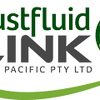Hydraulic hose and fittings play a crucial role in the optimal performance and safety of machinery and equipment. Proper installation is essential to prevent leaks, maintain efficiency, and prolong the lifespan of hydraulic systems.
In this comprehensive guide, we will delve into the step-by-step process of installing hydraulic hose and fittings, emphasising the importance of precision and care in every stage.
Understanding Hydraulic Hose and Fittings
Hydraulic hoses and fittings are instrumental in transferring fluid power within machinery and equipment.
The selection of the right type of hydraulic hose and fittings is crucial for seamless functionality. There are various types of hydraulic hoses, including rubber, thermoplastic, and steel reinforced, each with specific characteristics and applications.
Similarly, fittings such as JIC, NPT, and SAE are designed to suit different system requirements. It is imperative to select compatible hose and fitting materials to ensure optimal performance and longevity.

Pre-Installation Preparation
Prior to installation, a thorough inspection of hoses, fittings, and related components is essential to identify any signs of wear, damage, or contamination.
Additionally, cleaning the installation area is crucial to prevent foreign particles from compromising the hydraulic system during assembly.
Section 3: Step-by-Step Installation Process
1. Selecting the Right Tools
Essential tools such as wrenches, cut-off machines, and assembly lubricants are required for a successful installation. Using the right tools ensures precision and efficiency throughout the process.
2. Measuring and Cutting Hoses
Accurately measuring and cutting hydraulic hoses is essential to ensure proper length and fit. The use of appropriate cutting tools prevents fraying or uneven cuts, contributing to a secure installation.
3. Attaching Fittings
The process of attaching fittings to hoses, whether through crimping or swaging, demands attention to proper alignment and orientation to prevent leaks or pressure loss. This step is crucial in ensuring the integrity of the hydraulic system.
4. Securing Connections
Techniques for securely fastening hose assemblies to equipment or machinery without causing strain on connections are vital to maintaining the longevity and functionality of the system.
5. Testing for Leaks
Conducting a thorough leak test post-installation is imperative to verify the tightness and integrity of the connections, ensuring the absence of any potential leaks that could compromise system performance.
Safety Considerations
Throughout the installation process, strict adherence to safety precautions is paramount to safeguard against potential hazards such as high-pressure fluid exposure or mechanical injuries.
Prioritising safety ensures the well-being of individuals involved in the installation and the longevity of the hydraulic system.
Conclusion
In conclusion, the proper installation of hydraulic hose and fittings is critical for the optimal performance and safety of machinery and equipment.
By prioritising precision and care in the selection, preparation, and installation processes, individuals and businesses can ensure the efficient function and extended lifespan of their hydraulic systems.
We encourage all readers to apply the insights provided in this guide to enhance their understanding and practice of installing hydraulic hoses and fittings. For professional results, you can contact Austfluid Link Asia Pacific today.

No comments yet